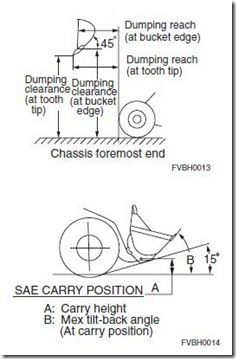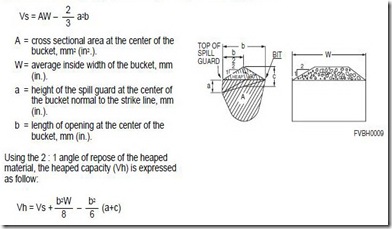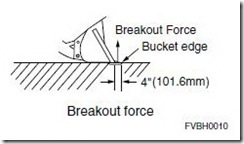The American Petroleum Institute (API) engine oil classification system was set up as a joint effort by API, ASTM (American Society for Testing and Materials) and SAE (Society of Automotive Engineers). The letter classification system is a method of classifying engine oils according to their performance characteristics, and relating this to their intended type of service.
The API system currently includes service classifictions for service stations/spark ignition engines ("S" series), for commercial application/compression ignition engines ("C" series), and for energy conserving engine oil ("EC" series). It is an "open-ended" system which allows for the adidtion of new designations with littlw change to existing ones.
S Series
SA – Formerly for Utility Gasoline and Diesel Engine Service (Obsolete) – Category SA denotes service typical of older engines operated under such mild conditions that the protection afforded by compounded oils is not required. This category has no performance requirements, and oils in this category should not be used in any engine unless specifically recommended by the equipment manufacturer.
SB – Minimum-Duty Gasoline Engine Service (Obsolete) - Category SB denotes service typical of older engines operated under such mild conditions that only minimum protection afforded by compounding is desired. Oils designed for this service have been used since 1930s and provide mild antiscuff capability and resistance to oil oxidation and bearing corrosion. They should not be used in any engine unless specifically recommended by the equipment manufacturer.
SC – 1964 Gasoline Engine Service (Obsolete) - Category SB denotes service typical of gasoline engines in 1964 through 1967 models of passenger cars and some trucks, operating under engine manufacturers’ warranties in effect during those model years. Oils designed for this service provide control of high and low temperature deposits, wear, rust, and corrosion in gasoline engines.
SD – 1968 Gasoline Engine Service (Obsolete) - Category SD denotes service typical of gasoline engines in 1968 through 1970 models of passenger cars and some trucks, operating under engine manufacturers’ warranties in effect during those model years. This category may also apply to certain 1971 or later models as specified (or recommended) in the owners’ manuals. Oils designed for this service provide more protection against high and low temperature deposits, wear, rust, and corrosion in gasoline engines than oils that are satisfactory for API Engine Service Category SC and may be used when API Engine Service Category SC is recommended.
SE – 1972 Gasoline Engine Service (Obsolete) - Category SE denotes service typical of gasoline engines in passenger cars and some trucks beginning with 1972 and certain 1971 through 1979 models operating under engine manufacturers’ warranties. Oils designed for this service provide more protection against oil oxidation, high temperature deposits, rust, and corrosion in gasoline engines than oils that are satisfactory for API Engine Service Category SD or SC and may be used when either of these categories is recommended.
SF – 1980 Gasoline Engine Service (Obsolete) - Category SF denotes service typical of gasoline engines in passenger cars and some trucks beginning with 1980 through 1989 models operating under engine manufacturers’ recommended maintenance procedures. Oils developed for this service provide increased oxidation stability and improved antiwear performance relative to oils that meet the minimum requirements of API Service Category SE. These oils also provide protection against engine deposits, rust, and corrosion. Oils meeting API Service Category SF may be used when API Engine Service Category SE, SD or SC are recommended.
SG – 1989 Gasoline Engine Service (Obsolete) - Category SF denotes service typical of gasoline engines in passenger cars, vans, and light trucks operating under manufacturers’ recommended maintenance procedures. Category SG oils include the performance properties of API Service Category CC. (Certain manufacturers of gasoline engines require oils that also meet the higher diesel engine Category CD.) Oils developed for this service provide improved control of engine deposits, oil oxidation, and engine wear relative to oils developed for previous categories. These oils also provide protection against rust and corrosion. Oils meeting API Service Category SG may be used when API Engine Service Category SF, SE, SF/CC or SE/CC are recommended.
SH – 1994 Gasoline Engine Service - Category SH was adopted in 1992 to describe engine oil first mandated in 1993. It is for use in service typical of gasoline engines in present and earlier passenger cars, vans, and light trucks operating under manufacturers’ recommended maintenance procedures. Engine Oils developed for this category provide performance exceeding the minimum requirements for API Service Category SG, which it is intended to replace, in the areas of deposit control, oil oxidation, wear, rust, and corrosion. Oils meeting API SH requirements have been tested according to the American Chemistry Council (ACC) Product Approval Code of Practice and may utilize the API Base Oil Interchange and Viscosity Grade Engine Testing Guidelines. They may be used where API Service Category SG and earlier categories are recommended. Effective August 1, 1997, API SH cannot be used except with API CF, CF-2, CF-4 or CG-4 when displayed in the API service symbol, and the C category must appear first.
SJ – 1997 Gasoline Engine Service – Category SJ was adopted in 1996 to describe engine oil first mandated in 1997. It is for use in service typical of gasoline engines in present and earlier passenger cars, vans, and light trucks operating under manufacturers’ recommended maintenance procedures. Oils meeting API SH requirements have been tested according to the American Chemistry Council (ACC) Product Approval Code of Practice and may utilize the API Base Oil Interchange and Viscosity Grade Engine Testing Guidelines. They may be used where API Service Category SH and earlier categories are recommended.
SL – 2001 Gasoline Engine Service – Category SL was adopted to describe engine oils for use in 2001. It is for use in service typical of gasoline engines in present and earlier passenger cars, sports utility vehicles, vans and light trucks operating under vehicle manufacturers’ recommended maintenance procedures. Oils meeting API SL requirements have been tested according to the American Chemistry Council (ACC) Product Approval Code of Practice and may utilize the API Base Oil Interchange and Viscosity Grade Engine Testing Guidelines. They may be used where API Service Category SJ and earlier categories are recommended.
SM - Introduced on 30 Novermber 2004 - Category SM oils are designed tp provide improved oxidation resistance, improved deposite protection, better wear protection, and better low-temperature performance over the life of the oil. Some SM oils may also meet the latest ILSAC specification and/or qualify as Energy Conserving. They may be used where API Service Category SJ and SL earlier categories are recommended.
C Series
CA – Diesel Engine Service (Obsolete) – Service typical of diesel engines operated in mild to moderate duty with high quality fuels; occasionally has included gasoline engines in mild service. Oils designed for this service provide protection from bearing corrosion and ring-belt deposits in some naturally aspirated diesel engines when using fuels of such quality that they impose no unusual requirements for wear and deposits protection. They were widely used in the 1940s and 1950s but should not be used in any engine unless specifically recommended by the equipment manufacturer.
CB – Diesel Engine Service (Obsolete) – Service typical of diesel engines operated in mild to moderate duty, but with lower quality fuels, which necessitate more protection from wear and deposits; occasionally has included gasoline engines in mild service. Oils designed for this service were introduced in 1949. They provide necessary protection from bearing corrosion and from high temperature deposits in naturally aspirated diesel engines with higher sulfur fuels.
CC – Diesel Engine Service (Obsolete) – Service typical of certain naturally aspirated, turbocharged or supercharged diesel engines operated in moderate to severe-duty service, and certain heavy-duty gasoline engines. Oils designed for this service provide protection from bearing corrosion, rust, corrosion and from high to low temperature deposits in gasoline engines. They were introduced in 1961.
CD – Diesel Engine Service (Obsolete) – Service typical of certain naturally aspirated, turbocharged or supercharged diesel engines where highly effective control of wear and deposits is vital, or when using fuels with a wide quality range (including high-sulfur fuels). Oils designed for this service were introduced in 1955 and provide protection from high temperature deposits and bearing corrosion in these diesel engines.
CD-II – Severe-Duty Two-Stroke Cycle Diesel Engine Service (Obsolete) – Service typical of two-stroke cycle diesel engines requiring highly effective control of wear and deposits. Oils designed for this service also meet all performance requirements of API Service Category CD.
CE – 1983 Diesel Engine Service (Obsolete) – Service typical of certain turbocharged or supercharged heavy-duty diesel engines, manufactured since 1983 and operated under both low speed, high load and high speed, high load conditions. Oils designed for this service may also be used when API Service Category CD is recommended.
CF-4 – 1990 Diesel Engine Service – Service typical of high speed, four-stroke cycle diesel engines. API CF-4 oils exceed the requirements for the API CE category, providing improved control of oil consumption and piston deposits. These oils should be used in place of API CE oils. They are particularly suited for on-highway, heavy-duty truck applications. When combined with the appropriate “S” category, they can also be used in gasoline and diesel powered personal vehicles – i.e., passenger cars, light trucks and vans – when recommended by the vehicle or engine manufacturer.
CF – Indirect-Injected Diesel Engine Service – Service typical of indirect-injection diesel engines and other diesel engines that use a broad range of fuel types, including those using fuel with high sulfur content; for example, over 0.5% wt. Effective control of piston deposits, wear and copper-containing bearing corrosion is essential for these engines, which may be naturally aspirated, turbocharged or supercharged. Oils designated for this service have been in existence since 1994 and may be used when API Service Category CD is recommended.
CF-2 – Severe-Duty Two-Stroke Cycle Diesel Engine Service (Obsolete) – Service typical of two-stroke cycle diesel engines requiring highly effective control over cylinder and ring-face scuffing and deposits. Oils designed for this service have been in existence since 1994 and may be used when API Service Category CD-II is recommended. These oils do not necessarily meet the requirements of API CF or CF-4 unless they pass the test requirements for these categories.
CG-4 – 1994 Severe-Duty Diesel Engine Service – This category describes oils for use in high speed four-stroke-cycle diesel engines used in both heavy-duty on-highway(0.05% wt sulfur fuel) and off-highway (less than 0.5% wt sulfur fuel) applications. CG-4 oils provide effective control over high temperature piston deposits, wear, corrosion, foaming, oxidation stability, and soot accumulation. These oils are specially effective in engines designed to meet 1994 exhaust emission standards and may also be used in engines requiring API Service Categories CD, CE, and CF-4. Oils designed for this service have been in existence since 1994.
CH-4 Severe-Duty Diesel Engine Service – This service oils are suitable for high speed, four-stroke diesel engines designed to meet 1998 exhaust emission standards and are specifically compounded for use with diesel fuels ranging in sulfur content up to 0.5% weight. CH-4 oils are superior in performance to those meeting API CF-4 and API CG-4 and can effectively lubricate engines calling for those API Service Categories.
CI-4 – 2002 – Severe-Duty Diesel Engine Service – The CI-4 performance requirements describe oils for use in those high speed, four-stroke cycle diesel engines designed to meet 2004 exhaust emission standards, to be implemented October 2002. These oils are compounded for use in all applications with diesel fuels ranging in sulfur content up to 0.05% by weight. These oils are especially effective at sustaining engine durability where Exhaust Gas Recirculation (EGR) and other exhaust emission componentry may be used. Optimum protection is provided for control of corrosive wear tendencies, low and high temperature stability, soot handling properties, piston deposit control, valve train wear, oxidative thickening, foaming and viscosity loss due to shear. CI-4 oils are superior in performance to those meeting API CH-4, CG-4 and CF-4 and can effectively lubricate engines calling for those API Service Categories.
CI-4 Plus - 2004 - Used in comjunction with API CI-4, the " CI-4 PLUS" designation identifies oils formulated to provide a higher level of protection against soot-related viscosity increase and viscosity loss due to shear in diesel engines. Like Energy Conserving, CI-4 PLUS appears in the lower portion of the API Service Symbol "Donut."















![clip_image017[1] clip_image017[1]](http://lh6.ggpht.com/_UkKmznJU1PQ/SYkSJ3TBYfI/AAAAAAAAAFk/IT2MpbR6EPs/clip_image017%5B1%5D%5B2%5D.jpg?imgmax=800)




































